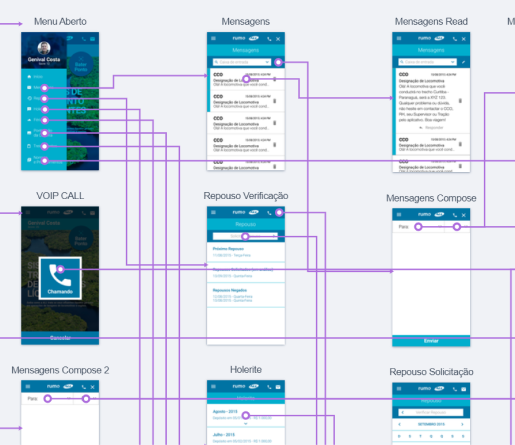
We have to control the train driver working hours, but the locomotive has no systems to control the shift nor an internet access point. The locomotive is constantly passing through areas with no network coverage.

The basic training was followed by a 60 km train journey pulling a load of soybeans. During this period, it was possible to observe the context and the behavior of the driver while driving. After the trip, some interviews were performed with the technical staff to understand the whole process, map the context, and identify potential opportunities.






After the discovery stage, a lot of drafts, mind maps and other drawings were created to materialize the findings. This stage produced a lot of visual assets that guided the following stages.





The user interface was designed to focus on the mobile experience. All the components were planned prioritizing: good readability, high contrast, and similarity to user-known interfaces. The color palette is inspired by Rumo's brand colors.


The last stage was the usability validation with real users. The tests were conducted with more than 10 drivers that should follow a sequence of simple tasks. The whole test was recorded and the user actions were tracked using heatmap software.




The project was a complete success and allowed the company to release an app with more than 20 features. Due to its innovations for the railroad industry, Rumo presented its innovative project at the Oracle OpenWorld event and was awarded.
